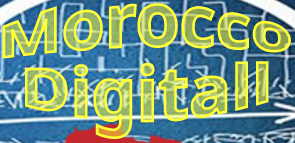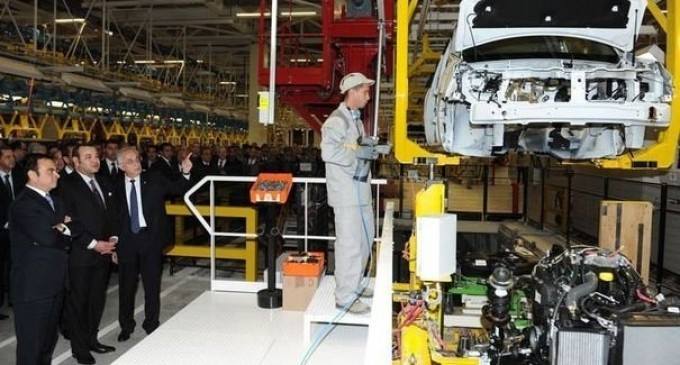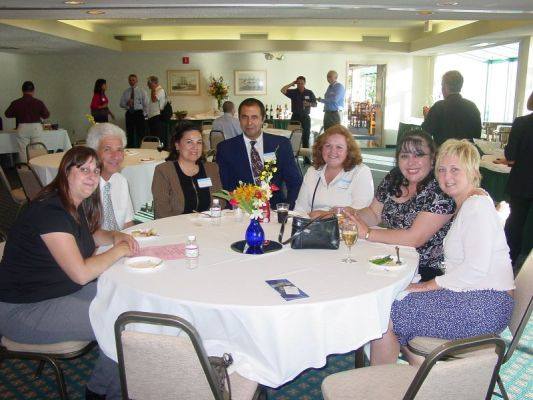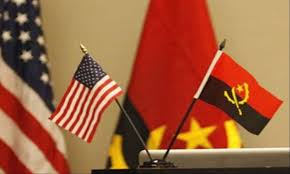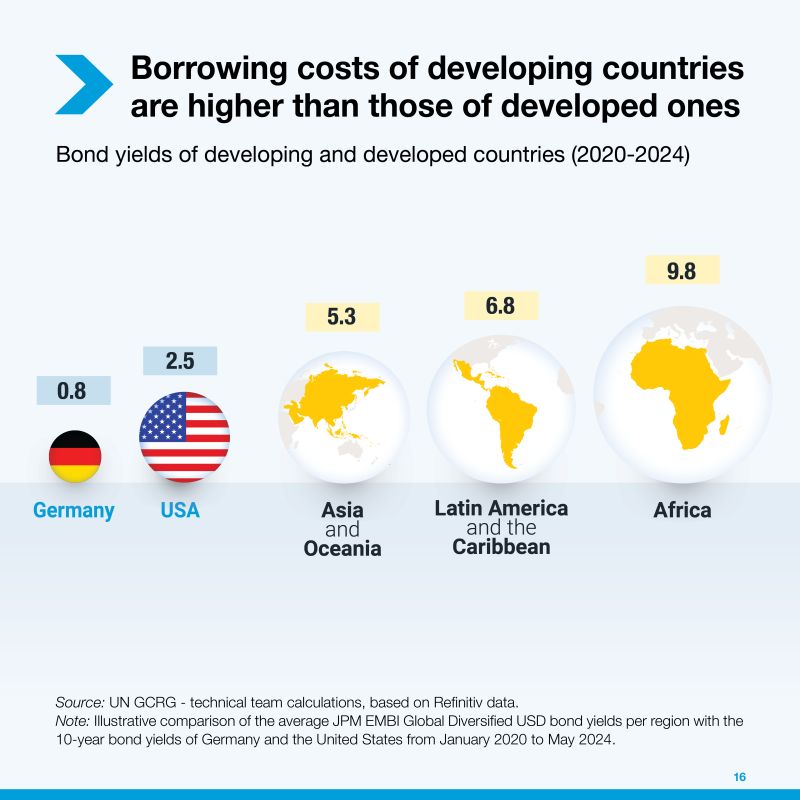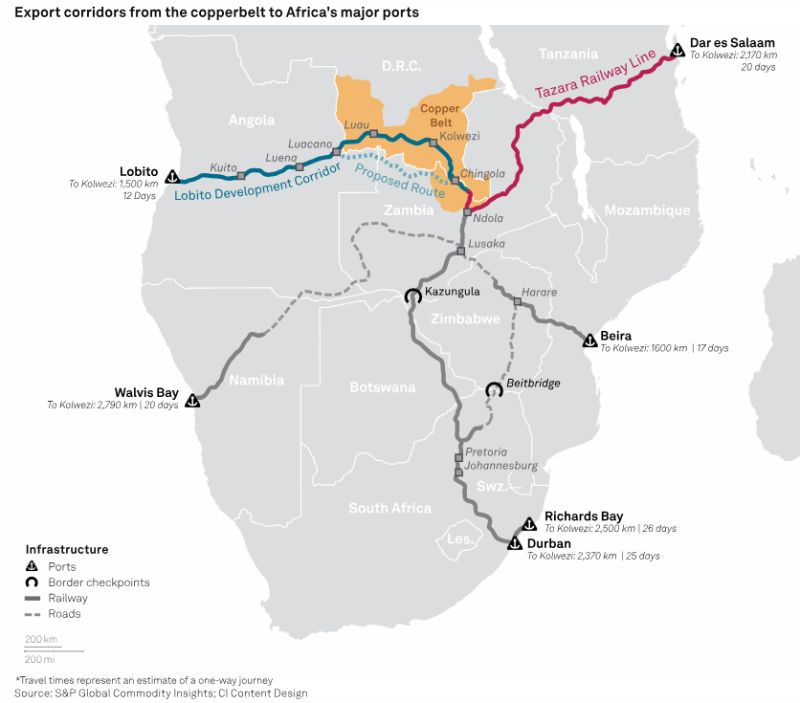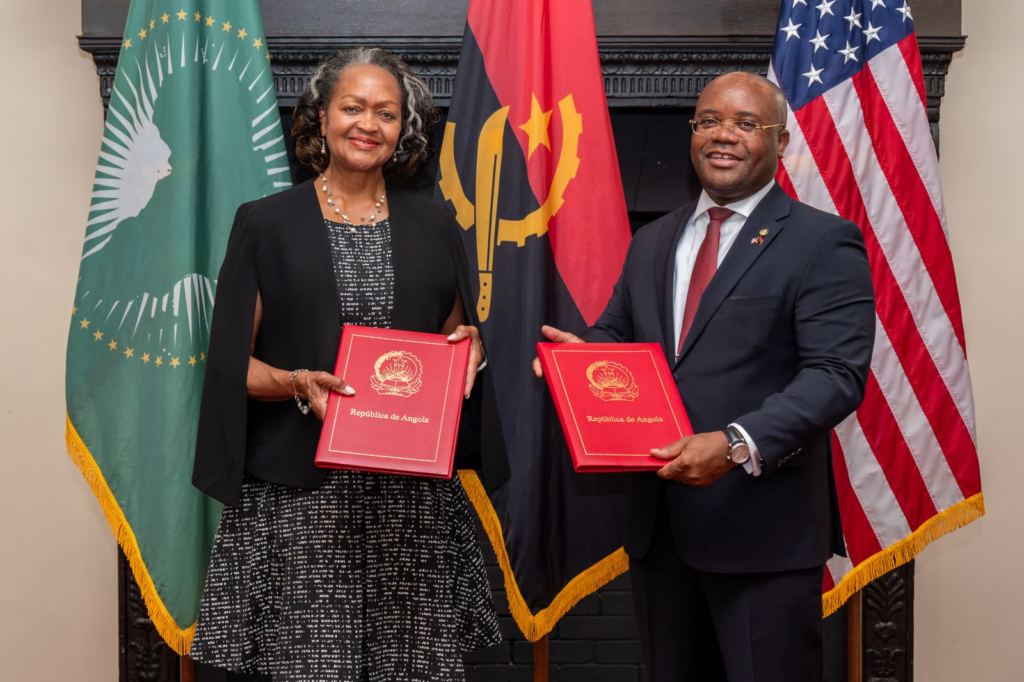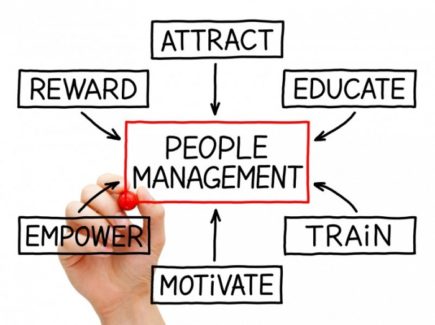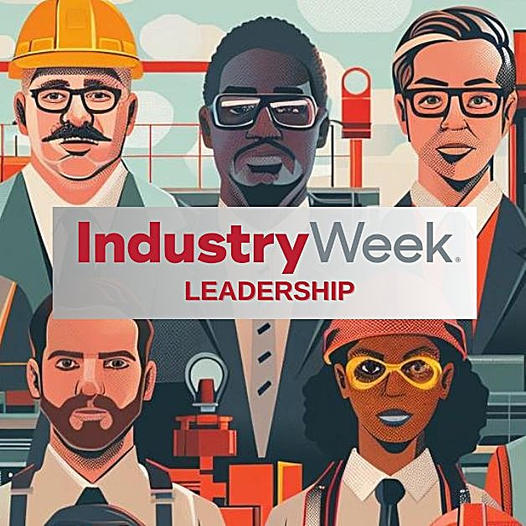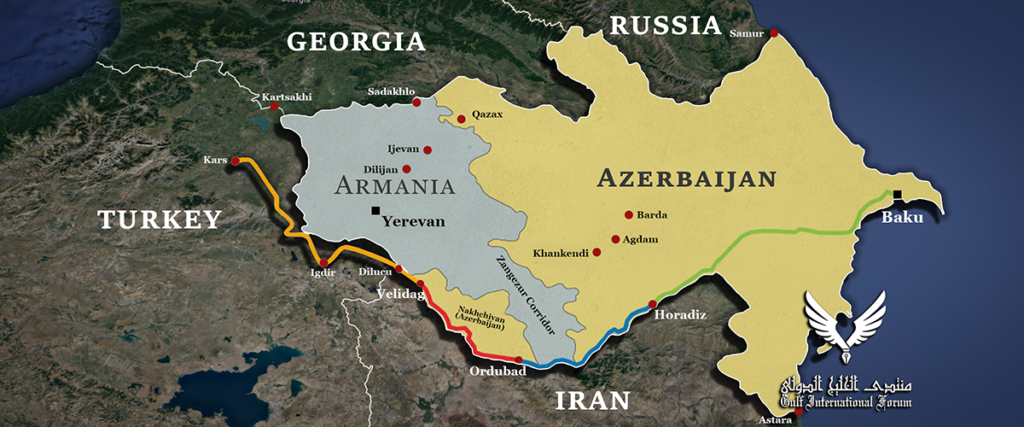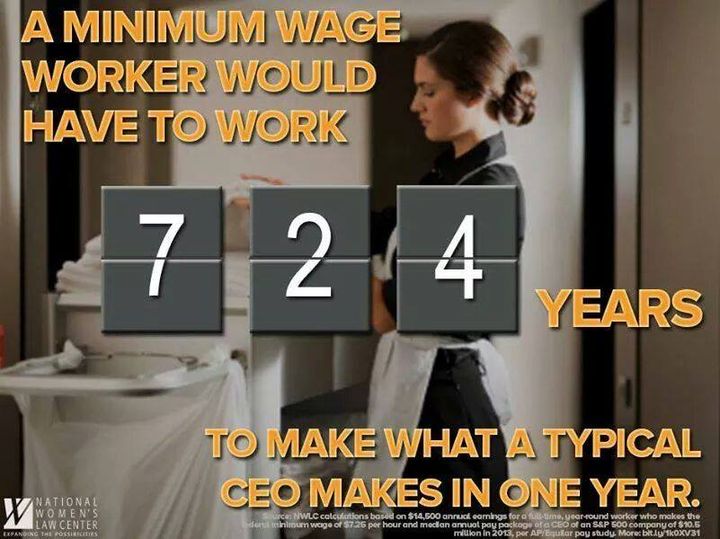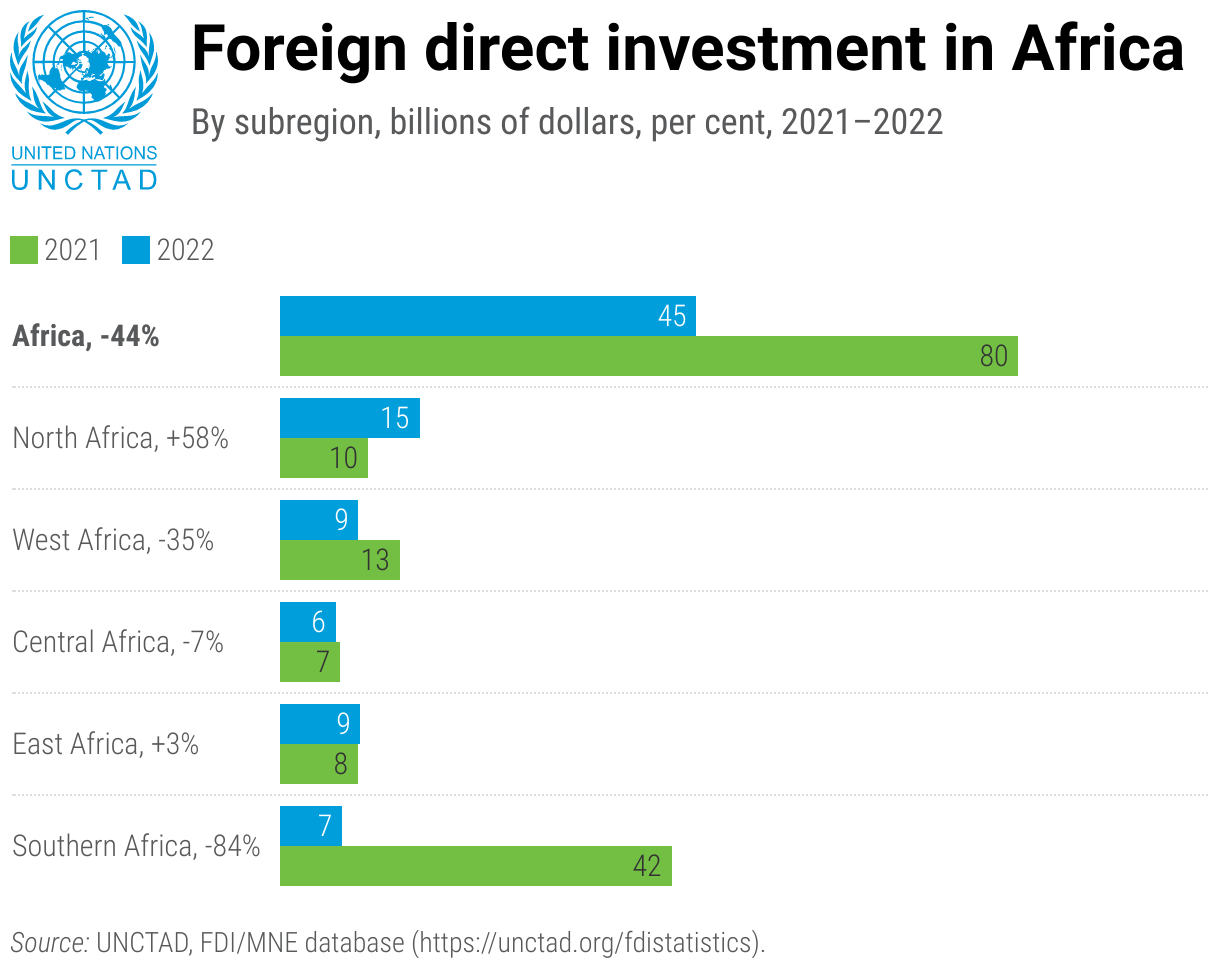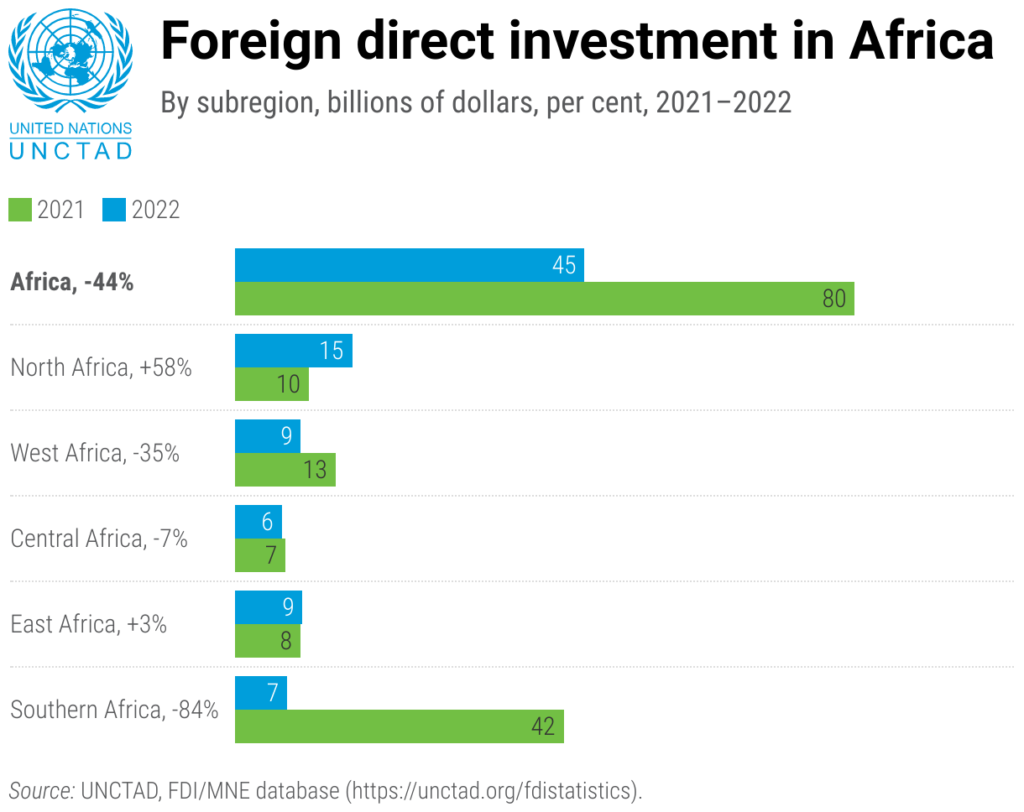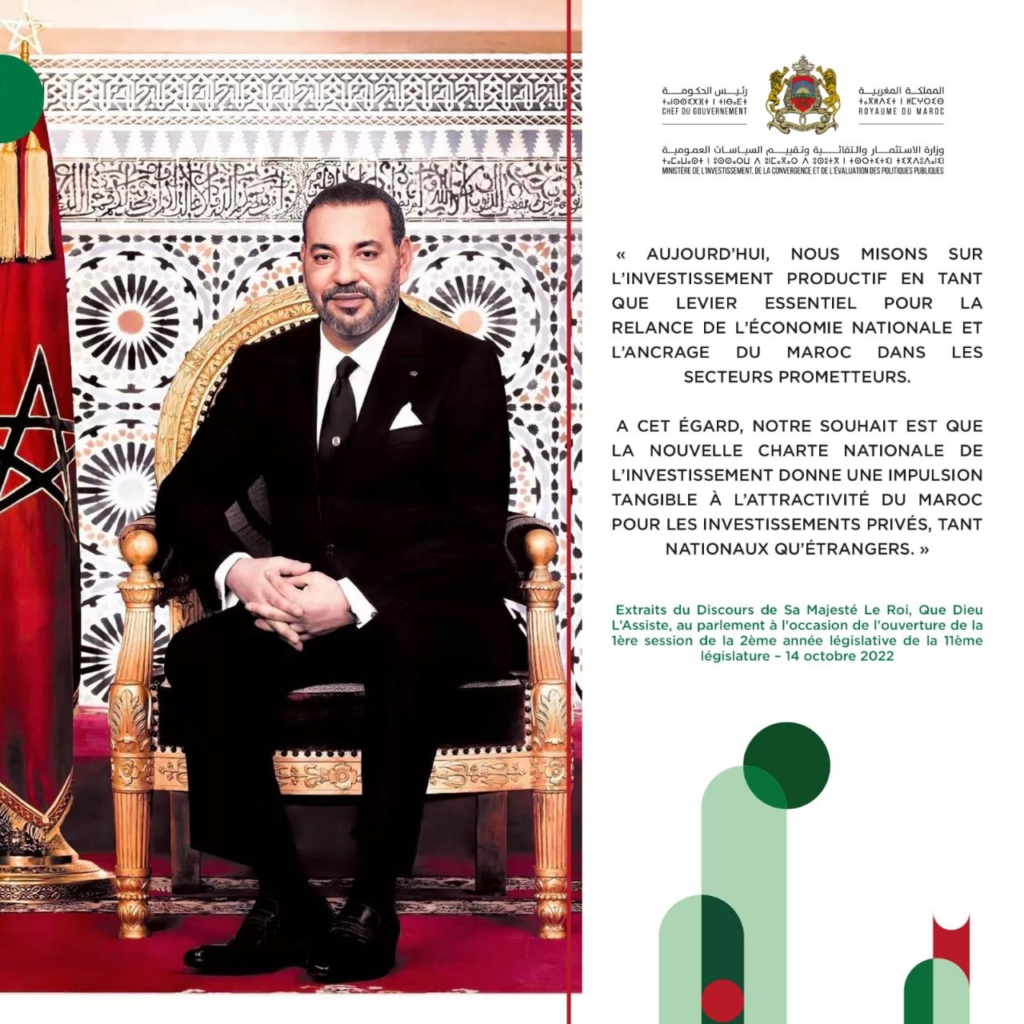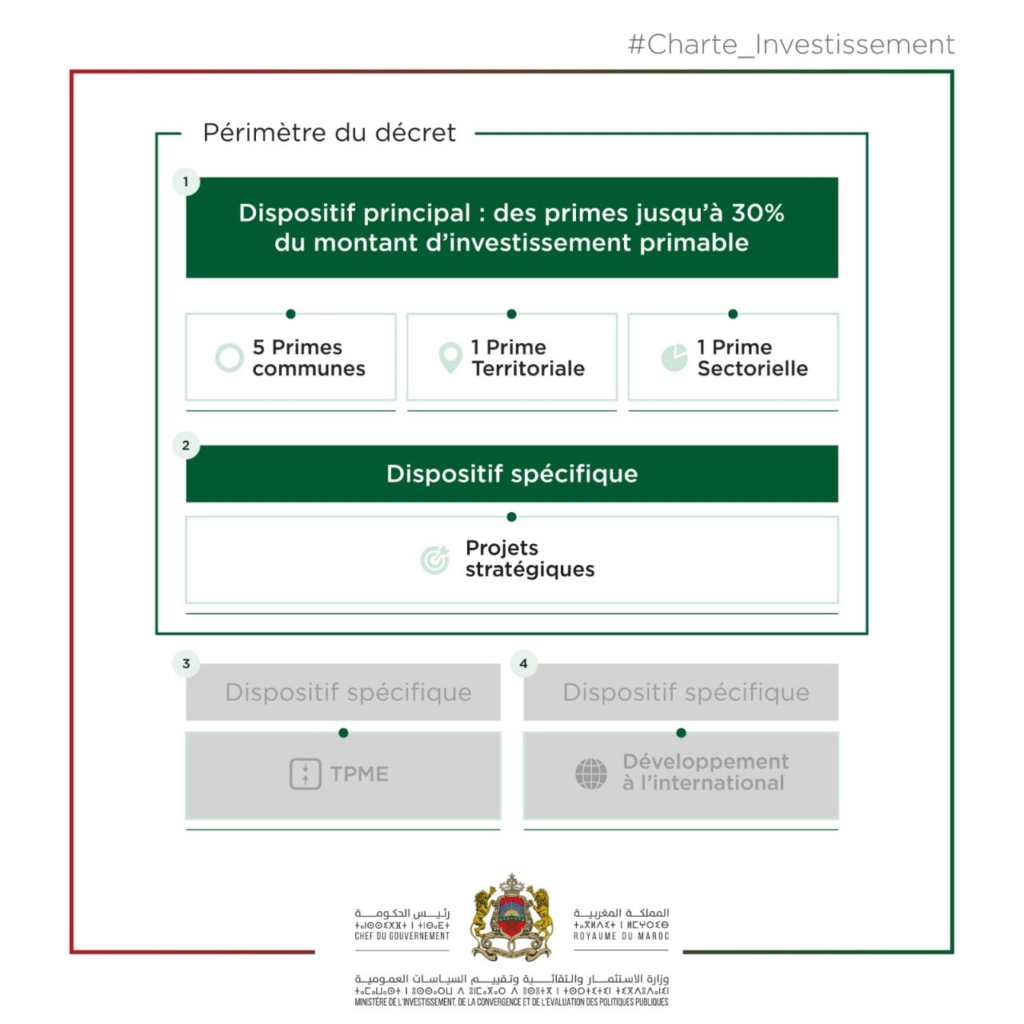AFRICA – AFRIQUE – ÁFRICA – أفريقيا – 非洲, MAROC, TECHNOLOGIE ET INNOVATION
L‘analyse présente est faite en 2 parties complémentaires:
Digital Made in Morocco: Écosystème, Économie du Savoir et Industrie Automobile
Première Partie: Digital Made in Morocco: Écosystème, Économie du Savoir et Industrie Automobile – Dr. Said El Mansour Cherkaoui
★ CHRONIQUE 🌎 CHERKAOUI ★ – L‘analyse présente est faite en 2 parties complémentaires: Première Partie: Digital Made in Morocco: Écosystème, Économie du Savoir et Industrie Automobile Le Maroc doit faire face a une économie mondiale centrée sur l’exploitation commerciale du savoir, en l’occurrence l’innovation et le développement de secteurs a haute valeur ajoutée dont l’utilisation de l’intelligence artificielle augmente la … Lire la suite

Deuxième Partie: Digital Made in Morocco: Économie du Savoir et Changement Industriel
Dr. Said El Mansour Cherkaoui

MAROC DIGITALL – L‘analyse présente est faite en 2 parties: Digital Made in : Écosystème, Économie du Savoir et Industrie Automobile – MAROC CROISSANCE L’analyse présente est faite en 2 parties complémentaires: Première Partie: Digital Made in Morocco: Écosystème, 28 JUIN 2018 … Continuer de lire New Strategic Drive for Development More you hear it, More Noise will come from it! Silence ! On tourne ! Action ! Time is the Essence of Action ! Time of the Transfer of Know-How and Technology is no more of the present. October 28, 2022 … Initialement publié: 11.12.2017 … Lire la suite


Application Numérique, Économie du Savoir, Écosystème et Industrie Automobile au Maroc

“We are in a perfect location at the gates of Europe,”
– Jean-François Gal, director of Renault factory in northern Morocco
- Le Maroc doit faire face a une économie mondiale centrée sur l’exploitation commerciale du savoir, en l’occurrence l’innovation et le développement de secteurs a haute valeur ajoutée dont l’utilisation de l’intelligence artificielle augmente la différenciation technologique. Ce décalage au détriment des pays subcapitaliste ayant une faible intégration technologique permet une plus grande réduction de coûts de production tout en augmentant le volume produit et un accroissement de l’écart entre les pays consommateurs et les pays détenteurs de la technologie tout en établissant de nouvelles formes de compétitivité doublées par un manque d’accès a l’innovation technologique qui est dorénavant justifiée par une invocation des lois du marché international et la division internationale du travail technologique. Ces avances technologiques permettent d’imposer une modernisation de l’infrastructure de transportation comme de celle même des aménités. On assista au Maroc a un déferlement de réalisations modernisatrices qui étaient plus guidées par cet impact de l’attractivité sectorielle des investissements étrangers et show case afin de plaire au capital étranger.
- Ce « monopole » de l’innovation technologique basé sur une nouvelle redistribution des taches productives, des décisions financières et des responsabilités gestionnaires sur le plan global et a travers une redéfinition de la division international du travail, tous dote les pays créateurs du privilège d’être les premiers innovateurs « first movers » qui entre autres leur permet de dicter les conditions d’embauche, les traitements salariaux et sociaux et le niveau des bénéfices fiscaux et autres incitations offert par les politiques d’attractivité par les pays subcapitalistes vis-a-vis de l’investissement étranger direct productif.
- Pour ces pôles industriels « Écosystèmes », une infrastructure fut modernisée et privilégiée dans la politique industrielle et régionale de l’Etat Marocain. L’exemple de l’Alliance Renault – Nissan confirme et innove dans la mise en place de ces plateformes multinationales tournées vers les pays fournisseurs a la fois d’une main-d’oeuvre relativement a bas salaire et possédant une demande pour les véhicules assemblés localement tout en servant de fournisseurs pour les autres « clusters automotive » entourés d’une value-chain supply pour la production des composants et cela comme l’affirmation locale et régionale d’une stratégie internationale.
- L’Économie Numérique et l’Économie du Savoir sont ainsi réintégrer a travers le monde permettant ainsi la création d’une synergie a la mode de écosystème comme plateformes pour la production et l’écoulement du produit final dans les marchés a proximité comme l’approvisionnement des autres usines dans les pays distants, ce qui est le cas actuellement de la présence de Renault au Maroc. La production automobile au Maroc est en quelque sorte un « bridge’ entre ces considérations gestionnaires d’intégration internationale des unités de productions comme c’est un créneau de production de véhicules destinés a la fois a la demande locale, européenne et africaine.
Globaloganization of Renault Development Strategy: Said El Mansour Cherkaoui
Lire comment Renault a retrouver une position pole de leader en appliquant une nouvelle stratégie de délocalisation et de redéploiement qui harmonisa a la fois la création de hub internationaux connectés et une espace de vente basé sur la production du même modèle et une gamme d’entrée standard: Logan
Executive Briefing: This article presents the drive of Renault from the edge of bankruptcy to the rise of its model Logan to international prominence, fame and success. At the same time, Renault concentrated its production in countries that have been considered by the major car manufacturers as solely a marketplace and not the location of their production. Cette résurrection de Renault coïncida avec une rupture dans la volonté des décideurs nationaux des pays d’accueil de conduire leurs économies dans la voie du développement généralisé national. Dorénavant, le libéralisme idéologique et sa traduction opérationnelle sous forme du Développement Durable privilégient et accordent la primauté a des politiques conjoncturelles basées sur l’attractivité et l’implantation des créneaux industriels et a des productions sectorielles complémentaires pour la stimulation de la création de l’emploi, l’attrait des producteurs des composants mécaniques et la stimulation des exportations.
Investissement Etranger, Écosystème et Secteur Automobile au Maroc
- « Les nouveaux investissements attestent du positionnement affirmé du secteur industriel du Royaume sur des activités à haute valeur ajoutée, ainsi que de la confiance d’opérateurs internationaux de renom dans le programme industriel national. Ils attestent aussi du changement de dimension industrielle à l’œuvre dans le Royaume qui migre ostensiblement vers un modèle économique solide confortant sa marche vers le concert des nations émergentes », rapporte la MAP.
Le Maroc n’est qu’un Hub comme tous les autres plantees par les Multinationales comme creneau regional offrant des facilites a tous les egards et integree dans leur propre supply chain et leur maillons formant la chaine de leur propre interne creation de la valeur ajoutee a leur taux de rentabilite de leurs operations et le niveau de profitabilite necessaire a leur maintain dans l’innovation et comme reponse et bouclier contre la concurrence acharnee des autres producteurs automobiles, et contre les aleas de la conjoncture internationale qui en grande partie provient des contradictions internes au systeme capitaliste durant des cycles de recyclage de ses propres exces au niveau de la production qu’au niveau de la redistribution de cette valeur au niveau social. L’integration de la robotique n’a en fait que reduit la demande pour les voitures plus sophistiquees et destinees pour les marches a haut niveau de revenu et ou la parite du pouvoir d’achat est maintenu haute par l’intervention directe de l’Etat au niveau de la fixation du taux d’interet et autres instruments interventionniste de reglage et de regulation de l’economie.
Dans cette perspective, Moulay Hafid Elalamy Ministre de l’Industrie, de l’Investissement, du Commerce et de l’Economie Numérique déclarait en 2015 que ces investisseurs « peuvent investir 100% et avoir une appropriation entière de leurs entreprises au Maroc. Ils peuvent également rapatrier du pays 100 pour cent des dividendes et tous leurs gains quand ils vendent leur entreprise. Donc, il y a une liberté totale en ce qui concerne le mouvement des capitaux.»
Est ce que l’Industrie Automobile est Marocaine?
Said El Mansour Cherkaoui: Un catalyseur mondial des affaires, des investissements et du commerce international …… Veuillez accéder à ce lien pour plus de contributions : https://triconsultingkyoto.com/?p=5869 Est ce que l’Industrie Automobile est Marocaine? Franchement, vous continuez à placer des notions rétrogrades du développement économique. Avec ces titres-choc, les présentations de vidéo, projections et les conférences … Lire la suite de
Le Ministre Elalamy souligna aussi l’importance de la formation des travailleurs, ce qui permettra le pays à mieux répondre aux exigences des entreprises étrangères. Une incitation supplémentaire a été la création de 4 zones de libre-échange et des zones de production sectorielles de Kenitra, Nouacer, Tanger et Oujda, bénéficiant d’un taux d’imposition de 0% pour les cinq premières années d’exploitation, suivie d’une taxe de 8,75% pour une période de vingt ans.
Production, Création de l’Emploi et Exports dans l’Industrie Automobile au Maroc
«Les technologies numériques transforment le monde des affaires, du travail et de l’administration publique», Jim Yong Kim, président du Groupe Banque mondiale.
La Société marocaine de construction automobile (SOMACA) a célébré le 28 juillet 2016, la sortie de chaîne de son 500 000ème véhicule produit depuis 2005, date où le groupe Renault a pris le contrôle de l’usine : une citadine Dacia Logan destinée au marché local.ans le royaume chérifien, 70 536 véhicules ont été vendus par le groupe en 2017, soit une hausse de 14,3 % par rapport à 2016, et représentent 41,8 % du marché. Les modèles Logan 2 (Dacia), Dokker (Dacia) et Clio 4 (Renault) ont eu les faveurs des acheteurs, avec respectivement 12 933, 11 781 et 11 441 véhicules vendus, juste devant Sandero (10 959 véhicules vendus). Parmi ce quatuor de tête, seule la Clio 4 est importée, les trois autres modèles étant produits localement à Casablanca pour Logan 2 et Sandero, et à Tanger pour Dokker et Sandero.


Au premier semestre 2017, Renault-Nissan se hisse au premier rang mondial des constructeurs automobiles. Avec 5.268.079 voitures vendues sur les six premiers mois de l’année, le groupe détrône Volkswagen (5.155.600 ventes) qui était n°1 en 2016 malgré le diesel gate. Toyota complète ce podium avec 5.129.000 véhicules vendus. Sur l’année écoulée, le nombre de voitures écoulées par Renault a bondi de 10,4%, ajoute le quotidien économique.*
Création de l’Emploi:
Selon certaines déclarations, un seul emploi créé dans l’industrie automobile mène à six autres emplois directs dans le secteur des fournisseurs et d’autres accompagné de quatre autres emplois indirects. Ce qui signifie un emploi dans l’industrie automobile crée dix autres emplois au total. Cette trajectoire de création modernisant avait permit ainsi l’émergence de nouveaux écosystèmes, y compris au sein même du secteur automobile, qui a attiré des investissements de sociétés telle que l’ouverture en 2012 par Renault de l’usine de production de pointe à Tanger Med (Maroc: Industrie Automobile).
Continuer a lire plus dans: Industrie Automobile Multi-Modèle et Infrastructure Multimodale au Maroc

Alors même que PSA Peugeot Citroën est en difficulté en Europe; le groupe automobile a également révélé des plans de construction d’une usine marocaine de 630 millions de dollars, cherchant ainsi a réduire à la fois les coûts de production et sa dépendance a l’égard des marchés européens. Un site près de la ville côtière de Kenitra commencera à assembler de petites et sous-compactes modèles pour l’Afrique et le Moyen-Orient d’ici 2019. L’entreprise s’attend à ce que l’usine se procure 60 pour cent des composants localement, éventuellement grimper a 80% à mesure que la chaîne d’approvisionnement se développe. Le but est d’avoir une main-d’œuvre de 4500 personnes une fois l’usine atteint sa capacité de 200 000 véhicules. La capacité de production de 90 000 véhicules devrait s’élever à 200 000 alors que les ventes commencent à décoller.
Commerce Extérieur:
L’industrie automobile reste la plus performante et poursuit sa progression entamée depuis la construction de l’usine Renault à Tanger. Concernant cette catégorie en particulier, durant l’exercice de 2017, le royaume a exporté 58,5 milliards de dirhams, soit une hausse de 7,1 % en comparaison avec 2016. Pour Renault, l’usine de Tanger s’est concentrée sur la production et l’exportation du véhicule de la gamme Entry, commercialisé sous la marque Dacia en Espagne, en France et en Allemagne.

Selon Moulay Hafid Elalamy Ministre de l’Industrie, de l’Investissement, du Commerce et de l’Economie Numérique, « le Maroc est actuellement un joueur mondial de taille raisonnable et, avec une projection dans les cinq prochaines années pour atteindre un million de véhicules, nous deviendrons un leader dans ce domaine. » Fait nouveau, Moulay Hafid Elalamy n’exclut pas d’attirer les plus grands groupes en recourant « aux services de banques d’affaires payées par success fees [primes de réussite] ».
Paul Carvalho, directeur général de Renault Groupe au Maroc, raconte, « chez Renault nous avons demandé nous-mêmes, allons-nous trouver les compétences, le soutien du gouvernement et l’infrastructure nous permettrait de réussir? Mais, vous pouvez voir ce que a été fait en termes d’infrastructure, tels que les autoroutes et les chemins de fer. » (Voir détails dans la carte ci-dessous de l’intégration logistique de Tanger avec Tétouan).

Ainsi, une réorientation du développement national fut entreprise a travers la primauté accordée a des créneaux industriels et a des productions sectorielles complémentaires dans la création de l’emploi, l’installation des producteurs des composants mécaniques et la stimulation des exportations. De même, l’apport de l’investissement etranger n’est plus porteur de know-how ou de transfert de technologie mais seulement de créateur d’emploi et de subcapitalisation de l’économie nationale aux directives et variations de l’Economie du Savoir globalisée et comme un secteur de production industrielle répondant aux termes du développement durable préconisé comme expression régionale du libéralisme international des échanges commerciaux.
Investissement Etranger, Écosystème et Secteur Automobile au Maroc

En 2017, écosystème prend place dans la stratégie des productions localisées de l’industrie automobile qui désormais au Maroc s’approvisionne des entreprises étrangères installées dans Tanger Automotive City a proximité de Tanger Med et produisant des composantes tel que les jantes en aluminium, des tableaux de bord, des pare-chocs, de sièges ou encore de boîtiers électromécaniques. Le ministre de l’Industrie, de l’Investissement, du Commerce et de l’Economie numérique, Moulay Hafid Elalamy, a prononcé une allocution devant le Roi dans laquelle il a indiqué que « le Plan d’Accélération Industrielle et la démarche des écosystèmes sont des leviers réels de l’accélération industrielle en marche », notant que les 26 investissements lancés dans l’automobile introduisent de nouvelles spécialisations au Maroc, renforcent l’intégration locale, densifient le tissu productif, et répondent à un besoin jusque-là comblé par l’import. Ils généreront 11 568 emplois directs, a-t-il indiqué. Le Roi Mohammed VI présida la cérémonie de lancement de 26 investissements industriels dans le secteur de l’automobile, d’un montant global de 13,78 milliards de dirhams. Une annonce qui intervient au lendemain de l’accord conclu avec le spécialiste chinois de la voiture électrique BYD Auto Industry.

Sur les 26 investissements, six projets s’inscrivent dans le cadre de la mise en œuvre de l’Écosystème Renault qui développe une plateforme mondiale d’approvisionnement depuis le Royaume. En effet, six projets meublent l’Écosystème pour Renault alors que 13 investissements seront réalisés dans le cadre de l’Écosystème PSA Peugeot qui impulse un nouveau développement à Kénitra, créant un total de 11 568 emplois directs pour un investissement de 13,8 MMDH. Cinq autres investissements s’inscrivent dans le cadre des activités de l’Écosystème «câblage et connectique», lancé en octobre 2014 et enfin deux investissements se déploient dans le cadre de l’Écosystème Valeo. Ces montants englobent aussi la production de jantes en aluminium, de tableaux de bord, de pare-chocs, de sièges ou encore de boîtiers électromécaniques. Grâce à la structuration de cet écosystème d’envergure, PSA Peugeot s’approvisionne actuellement en pièces usinées à hauteur d’un milliard d’euros par an à partir du Maroc et atteint un taux d’intégration locale de 55 %.
Investissement Etranger, Écosystème et Secteur Automobile au Maroc

Par contre, le déficit commercial du Maroc au titre de l’année 2017 s’est creusé de 2,6 %, selon les dernières statistiques livrées par l’Office des Changes, mardi 16 janvier. La différence entre les exportations du pays et ses importations s’élève ainsi à 189,8 milliards de dirhams (16,7 milliards d’euros), contre 185 milliards de dirhams l’année précédente. C’est la deuxième année consécutive que le déficit commercial s’accentue.
Le Maroc trouve dans l’Afrique Subsaharienne le contrepoids aux déséquilibres traversées par les économies occidentales. Pour se protéger, on assiste aux éclatements et a la remise en cause d’accords commerciaux, Brexit, projet d’accord régional transpacifique (TPP), Aléna (Nafta)et le Partenariat transatlantique (TTIP ou Tafta). En même temps, les chancelleries occidentales optent pour la mise en place de politique étrangère basée sur leurs armada protectionniste tel que les barrières administratives de « quota, » les mesures d’arrêt des flux migratoires et cela comme des décisions imposées par leur conjoncture instable. Ces élucubrations avaient toutes affaibli ou réduit la croissance des échanges tant avec le Maroc que le reste de l’Afrique donnant une impulsion a la régionalisation des échanges commerciaux et la recherche de débouchés par une pléiade d’accords d’association, d’intégration et de libre-échange.
Une compétition plus acharnée s’était ainsi infiltrée dans les échanges commerciaux dont la globalisation avait soudé les maillons de son enchaînement international. L’Afrique doit ainsi retourner a ses propres ressources et potentialités locales, régionales et périphériques a travers le renforcement du rapprochement entre ses composantes économiques, a savoir les Communautés Economiques Régionales et les accords bilatéraux d’échange commerciaux, financiers, culturels et dans ce cas de harmonisation de l’Economie Numérique avec l’Economie du Savoir.
Education Entrepreneuriale, Economie Numérique et Economie du Savoir en Afrique
C’est a travers l’établissement d’une économie numérique que les responsables du commerce extérieur et des relations financières internationales peuvent avoir accès a des données fiables et une gestion plus rapprochée des flux et leurs changements conjoncturels. Les données correspondantes peuvent faciliter la prise de decision comme toute intervention sectorielle sans remettre en cause les engagements pris envers le reste de l’Afrique et du monde avec lesquels le Maroc possède des traités d’échanges culturels et commerciaux.
De même, c’est dans l’éducation numérique que le Maroc peut explorer les ressources infra-structurelles, logistiques et technologiques pour puiser et établir les fondations digitales pour le renforcement de sa position de partenaire – compétiteur dans ses tentatives d’intégration tant dans le marché international, africain que pour sa candidature au Carré des pays émergents.
Economie du Savoir est a privilégier dans la formation de nouvelles strates d’entrepreneurs qui peuvent former une nouvelle « Technocratie Numérique » capable de guider et d’explorer les nouveaux horizons et applications numériques pour pouvoir coordonner et interconnecter les différentes ressources entrepreneuriales dans un même « One Stop Shop » afin d’avoir une facilite et une efficience dans l’accès, le traitement et la formulation de décisions et de solutions pouvant contribuer a passer a une vitesse supérieure dans leur élan innovateur entrepreneurial.
Pour cette raison, nous proposons également la création d’un American Institute of Entrepreneurship in Africa afin de contribuer dans l’établissement des premiers jalons d’un telle entreprise et un tel besoin, celui d’intégrer l’Économie Numérique et l’Économie du Savoir pour renforcer l’intégration économique régionale au Maroc et au sein de l’Afrique (voir détails dans la présentation ci-dessous)..

Version Française:
Présentation de American Institute of Entrepreneurship in Africa


Said El Mansour Cherkaoui, Ph.D.
American Institute of Entrepreneurship in Africa
Profile professionnel de Dr. Cherkaoui se trouve dans ce lien:
https://www.linkedin.com/in/drsaidcherkaoui
★ I provide guidance on entrepreneurship, business planning and the effectiveness of management policies for regional and international operations.
★ I develop strategies and proposals, conduct demos and formulate recommendations on practices, competitors and investment opportunities.
★ I customize, conduct and direct training for US and foreign government agencies, companies and workforce organizations.
★ For the Academia, I create new program studies and curriculum activities. I have also directed doctorate thesis and taught at Executive, Graduate and Undergraduate programs in the United States and conducted research for entities in France and US.
RESEARCH INTERESTS
- Economics
- Finance
- International Economics
- Global Political Economy
- Business and Finance
Le Maroc Numérique et l’Intégration Régionale et Internationale
- Published on January 16, 2018
- Edit article
- View stats
🌎 Said El Mansour Cherkaoui 🌍
🌎World Affairs Analyst🌍Speaker🌎Founder/Owner, Content Writer, Reporter and Editor of 16 Online News Sites 🌎 High Tech, Logistics, Automotive, Business and Trade, Political Economy and Memories 🌍

Projet Incubation et Croissance
L’étape essentielle dans un projet, c’est les performances mesurables prospectives et la réalisation de vecteurs porteurs d’innovation et d’expansion ayant comme dénominateur commun la flexibilité et comme coefficient multiplicateur une capacité d’adaptation à tout potentiel changement. Ces attributs demeurent le propre du leadership et de la sphère des décideurs qui maîtrisent les instruments et les leviers dans la conduite, la redéfinition des orientations intermédiaires et l’aboutissement final du projet.
De ce fait, les déclarations des préférences, les expressions des intentions et les formulations des options ne peuvent être qu’une seule quantification mais doivent être transformées en intelligence opérationnelle et en données interventionnistes accompagnant si ce n’est conditionnant le processus de la détermination des choix fondamentaux d’un projet encore au stade de la gestation. Une approche basée sur les notions du Travail d’Equipe mené par un Leadership décidé et averti doit primer sur toutes les autres considérations de la gestion et de la gouvernance afin d’instaurer une stratégie orientée vers le changement dans le progrès et amélioration du rendement.
Projet: Travail d’Equipe et Définition de Compétences
La vidéo ci-dessous démontre les défis et les contraintes ainsi que les solutions a travers l’identifications des freins et les compétences afin de stimuler le rendement d’équipe.https://www.linkedin.com/pulse/api/edit/embed?embed=%257B%2522type%2522%253A%2522link%2522%252C%2522title%2522%253A%257B%2522localized%2522%253A%257B%2522en_US%2522%253A%2522American%2520Institute%2520of%2520Entrepreneurship%2520in%2520Africa%2522%257D%257D%252C%2522description%2522%253A%257B%2522localized%2522%253A%257B%2522en_US%2522%253A%2522Manager%2520and%2520Change%2520Management%2520Dr.%2520Said%2520El%2520Mansour%2520Cherkaoui%2522%257D%257D%252C%2522provider%2522%253A%257B%2522name%2522%253A%2522YouTube%2522%252C%2522display%2522%253A%2522YouTube%2522%252C%2522url%2522%253A%2522http%253A%252F%252Fyoutube.com%2522%257D%252C%2522request%2522%253A%257B%2522originalUrl%2522%253A%2522https%253A%252F%252Fwww.youtube.com%252Fwatch%253Fv%253Dya4acTFOzLk%2522%252C%2522finalUrl%2522%253A%2522https%253A%252F%252Fwww.youtube.com%252Fwatch%253Fv%253Dya4acTFOzLk%2522%257D%252C%2522images%2522%253A%255B%257B%2522url%2522%253A%2522https%253A%252F%252Fi.ytimg.com%252Fvi%252Fya4acTFOzLk%252Fhqdefault.jpg%2522%252C%2522width%2522%253A480%252C%2522height%2522%253A360%257D%255D%252C%2522data%2522%253A%257B%2522com.linkedin.treasury.Link%2522%253A%257B%2522url%2522%253A%2522https%253A%252F%252Fwww.youtube.com%252Fwatch%253Fv%253Dya4acTFOzLk%2522%252C%2522html%2522%253A%2522Manager%2520and%2520Change%2520Management%2520Dr.%2520Said%2520El%2520Mansour%2520Cherkaoui%2522%252C%2522width%2522%253A-1%252C%2522height%2522%253A-1%257D%257D%257D&signature=AQpewWR-ZDto9ebflM1ScJqZYSdE
Cette inclusion permet aussi un encadrement plus efficace du projet vu que les décideurs reçoivent ainsi des notions renouvelables et des ouvertures sur des potentialités constructives permettant ainsi une plus grande participation des centres d’intérêts environnant comme une cohésion effective du projet avec les attentes des tenants des secteurs et des espaces que ce même projet vise comme finalité le développement de logiciels, d’applications innovatrices, de nouveaux produits et de services.
Économies de coûts,
une efficacité,
une stimulation pour les entreprises,
une amélioration des services civiques,
une politique éclairée,
une planification du rendement,
une recherche et des découvertes scientifiques,
une transparence des comptes publics et une responsabilité basée sur le respect des droits publics entraînant une participation accrue du public dans le dialogue démocratique.
https://www.linkedin.com/pulse/api/edit/embed?embed=%257B%2522type%2522%253A%2522image%2522%252C%2522title%2522%253A%257B%2522localized%2522%253A%257B%2522en_US%2522%253A%2522%2522%257D%257D%252C%2522description%2522%253A%257B%2522localized%2522%253A%257B%2522en_US%2522%253A%2522%2522%257D%257D%252C%2522provider%2522%253A%257B%2522url%2522%253A%2522http%253A%252F%252Faminenaf.weebly.com%2522%257D%252C%2522request%2522%253A%257B%2522originalUrl%2522%253A%2522https%253A%252F%252Faminenaf.weebly.com%252Fuploads%252F1%252F2%252F0%252F2%252F12025433%252Fentrepreneurship-aiea1-1-orig_2_orig.png%2522%252C%2522finalUrl%2522%253A%2522https%253A%252F%252Faminenaf.weebly.com%252Fuploads%252F1%252F2%252F0%252F2%252F12025433%252Fentrepreneurship-aiea1-1-orig_2_orig.png%2522%257D%252C%2522images%2522%253A%255B%257B%2522url%2522%253A%2522https%253A%252F%252Faminenaf.weebly.com%252Fuploads%252F1%252F2%252F0%252F2%252F12025433%252Fentrepreneurship-aiea1-1-orig_2_orig.png%2522%252C%2522width%2522%253A1063%252C%2522height%2522%253A800%257D%255D%252C%2522data%2522%253A%257B%2522com.linkedin.treasury.Image%2522%253A%257B%2522url%2522%253A%2522https%253A%252F%252Faminenaf.weebly.com%252Fuploads%252F1%252F2%252F0%252F2%252F12025433%252Fentrepreneurship-aiea1-1-orig_2_orig.png%2522%252C%2522width%2522%253A1063%252C%2522height%2522%253A800%257D%257D%257D&signature=Aam4O2JvLN0NlDy5iBEjdH7eM4hk
Les Services Publics / Clientèle et l’Intelligence Robotique de Gestion
Les profonds changements induits par les technologies numériques dans le circuit du transfert de la valeur et dans la distribution logistique de la marchandise et ses avoirs financiers font actuellement leur apparition même dans l’offre des services sociaux et publics en Californie et cela en plusieurs langues utilisées par le diverses ethnies d’immigrées. A travers un tel rapprochement et une adaptation de l’outil technologique robotique en fonction des besoins d’information, de collecte des formulaires et des applications ainsi que l’obtention de l’aide sociale, les services administratifs visent a la fois le renforcement de l’efficacité via une double dimension d’innovation du procédé établi et du produit final escompté. En Chine, c’est les examens administratifs et les examens scolaires sont évalués et notés par des robots.
Lire aussi: Globalisation Robotique et Internationalisation de l’Intelligence Artificielle

Cette innovation de procédé a travers l’adoption de la technologie robotique et l’intelligence artificielle permet en premier l’exploration de données sans avoir a recourir au retour de l’information ou bien a la réaction des utilisateurs pour identifier, collecter et quantifier les besoins prospectifs. L’introduction des technologies du futur et numériques, y compris l’Intelligence Artificielle d’innovation de produit permet l’émergence de nouveaux services, donc une croissance et une progression des services rendus sans pour autant imposer une occupation foncière plus large. L’espace déjà utilisé est donc plus manageable avec une plus grande productivité et une utilisation de l’environnement plus rationnelle tout en offrant un service direct et synchronous.

Ainsi, cette progression technologique se traduit aussi par une amélioration dans la provision de services se réalisent aussi a travers la multiplicité des services qui sont fournis simultanément avec ciblage, traçabilité et rétractabilité et sous la forme de Mode de Transfert Asynchrone/Spontané. L’autre dimension de cette « multitude de services et de produits», est le rassemblement, sur des plateformes multiples toute une panoplie d’informations décentralisées qui sont fournies par les utilisateurs qui permettent l’évaluation des performances, la croissance des demandes, l’identification de l’inefficacité et la définition de nouvelles stratégies en réponse.
Pour que ces nouvelles technologies conduisent à plus d’efficacité, il est nécessaire qu’elles s’accompagnent de changements organisationnels, d’une grande transparence dans leur utilisation et d’un recours massif aux services publics numériques par les citoyens et les entreprises.
Projet Numérique et Consultation Populaire
Dans le cadre d’un projet de développement numérique ayant des retombées directes sur l’économie-système, un ensemble d’outils très concrets doivent être conçus et doivent aussi résulter de la consultation directe publique notamment entre les entrepreneurs concernés, les institutions étatiques et les industriels établis et le reste des citoyens et cela tout au long de la mise en place et le lancement des étapes du projet numérique. Le numérique soulève des questions essentielles sur lesquelles il faut se positionner clairement pour que le contrat entre les citoyens et l’État soit adapté à cette nouvelle ère.et tant au niveau national comme sur le plan de sa projection à l’international.
Un changement des procédures et l’introduction de nouvelles formes de gestion doivent se combiner pour réussir une transition vers l’adoption des techniques numériques qui sont aussi relayées et branchées sur un circuit global tout en ayant une visée et un ancrage locale et régionales. Dans ce but, la gestion des services et l’offre de produits est conduite a travers l’existence d’une vision dont les compétences, les systèmes d’incitation, les ressources et le plan d’action doivent être additionnés et harmonisés pour réussir l’adoption d’un changement opérationnel. L’utilisation efficace du numérique comme nouvelles techniques doit être orientée et basée sur une approche intégrée de la gestion du changement organisationnel et du développement des structures opérationnelles tant au niveau local, régional et international.
L’apport primordial de l’éducation et la formation (exemple ci-bas de AIEA = American Institute of Entrepreneurship in Africa) ajoute une valeur qui en complément des compétences organisationnelles et des créneaux porteurs permettent d’accéder a ces déterminations:
- Identifier les problèmes réglementaires potentiels sur le marché des applications mobiles et de prendre en compte une série de problèmes rencontrés par les consommateurs.
- Relocaliser le Maroc a travers une adoption d’une chaîne de valeur et un développement numérique pouvant a la fois être une réponse et une solution administrative et commerciale facilitant l’émergence du Maroc sur le plan de l’intégration numérique en tant qu’Economie Sociale tout en stimulant la creation d’Entreprises Sociales.
- “Sociabiliser” l’utilisation numérique par les institutions et les entreprises et par les fournisseurs des applications et les logiciels peut aussi rendre réel la possibilité de “Connect Africa” afin de créer des marchés périphériques et limitrophes pour le Numérique Marocain et cela a travers les Communautés économiques régionales (CER) de l’Union africaine. (voir détails dans cette Matrix).
Projet de gestion du Changement de Valeur: résultats et résultats
Voici une recherche récente que j’ai développée sur le ROI et qui est liée à une étude de programme que je développe pour mon projet de création: American Institute of Entrepreneurship in Africa. Ce travail est basé sur les domaines d’étude du ROI concernant la gestion du changement de valeur et le développement numérique en réponse aux défis rencontrés par le Maroc et l’Afrique dans leur intégration réciproque et celle parallèle dans le marché international:
- Cette valeur de la gestion du changement est définie en termes de réussite du projet, de réalisation des avantages, de création de valeur et de réalisation du profit sur l’investissement.

«Les technologies numériques transforment le monde des affaires, du travail et de l’administration publique », a déclaré Jim Yong Kim, président du Groupe Banque mondiale. “
Au niveau des affaires financières, le Maroc avait déjà entamé une telle perspective. En effet, dès 1990 on assista à l’implantation de la BMCE Bank qui avait acquis successivement 27,38% du capital de la Banque de développement du Maroc, et 25% du tour de table de Congolaise des banques. En 2007, la BMCE s’est appropriée un contrôle d’actionnariat de l’ordre de 59,39% dans la Bank of Africa du Mali. Actuellement, le groupe BMCE s’est forgé un réseau numérique, de filiales et de représentations qui couvre 14 pays africains et représente l’un des premiers réseaux électroniques bancaires dans la région de l’Union Économique et Monétaire Ouest-Africaine.

Maroc – Côte d’Ivoire: Fondements de l’Intégration Économique de l’Afrique

Start-Up and Tech Hubs in Africa

« Nous devons continuer à connecter [l’Afrique et] tout le monde et ne laisser personne sur la touche, parce que le coût des opportunités perdues est énorme. Mais pour que les dividendes du numérique soient largement partagés entre toutes les franges de la société, les pays doivent aussi améliorer leur climat des affaires, investir dans l’éducation et la santé, et promouvoir la bonne gouvernance.» Jim Yong Kim
En effet, la numérisation fait évoluer l’administration vers une plateforme de réciprocité a travers laquelle les citoyens et les services publics interactivement communiquent, et interagissent. De ce fait, le numérique au Maroc doit se positionner dans l’efficacité et la transparence pour que le contrat entre les citoyens/nes et l’État soit adapté à cette nouvelle ère. L’Etat et les pouvoirs publics doivent se fournir des potentialités suivantes:
- Mobiliser des données fiables en matière de diagnostic organisationnel du processus de la gestion du changement suite a l’adaptation des techniques numériques;
- Concevoir des modèles numériques et évaluer les possibilités de changement organisationnel dans le but de faire une analyse approfondie de l’apport potentiel et de planifier la mise en oeuvre de nouveaux services et produits;
- Développer des compétences en gestion numérique du changement dans la préparation, la mise en oeuvre, la communication et l’évaluation d’un changement organisationnel a travers une formation continue correspondante a l’évolution des technologies du futur.
Dans ce but, les filières organisationnelles considérées d’avenir constituent les grands axes de développement et d’implantation d’orientations et de décisions allant dans le sens de l’encouragement de l’innovation qui favorise l’édification d’une organisation plus cohérente et unifiée.Concernant l’éducation numérique au Maroc et son intégration par l’economie numérique, je vous propose mon projet sur l’établissement d’une structure de formation, de préparation et d’accompagnement des Entrepreneuriat au Maroc et dans le reste de l’Afrique en premier les pays avec lesquels le Maroc possède des traités d’échanges culturels et commerciaux.
Pour cerner également les grandes lignes de mon projet sur l’Entrepreneuriat en Afrique, veuillez consulter le contenu de l’illustration suivante qui présente le Résumé Exécutif de American Institute of Entrepreneurship in Africa:https://www.linkedin.com/pulse/api/edit/embed?embed=%257B%2522type%2522%253A%2522link%2522%252C%2522title%2522%253A%257B%2522localized%2522%253A%257B%2522en_US%2522%253A%2522R%25C3%25A9sum%25C3%25A9%2520Ex%25C3%25A9cutif%253A%2520American%2520Institute%2520of%2520Entrepreneurship%2520in%2520Africa%2522%257D%257D%252C%2522description%2522%253A%257B%2522localized%2522%253A%257B%2522en_US%2522%253A%2522%2522%257D%257D%252C%2522provider%2522%253A%257B%2522name%2522%253A%2522Google%2520Docs%2522%252C%2522display%2522%253A%2522Google%2520Docs%2522%252C%2522url%2522%253A%2522http%253A%252F%252Fdocs.google.com%2522%257D%252C%2522request%2522%253A%257B%2522originalUrl%2522%253A%2522https%253A%252F%252Fdocs.google.com%252Fpresentation%252Fd%252F1rLpVWD7sH4XZLxsjuYCU8OTz5X1C-oBpYdFQsaingu8%252Fedit%253Fusp%253Dsharing%2526usp%253Dembed_facebook%2522%252C%2522finalUrl%2522%253A%2522https%253A%252F%252Fdocs.google.com%252Fpresentation%252Fd%252F1rLpVWD7sH4XZLxsjuYCU8OTz5X1C-oBpYdFQsaingu8%252Fedit%253Fusp%253Dsharing%2526usp%253Dembed_facebook%2522%257D%252C%2522images%2522%253A%255B%257B%2522url%2522%253A%2522https%253A%252F%252Flh4.googleusercontent.com%252Fz2LobRvh-XaRwsQXO-Oi518GkFEEsMyCsqEWPiadlWjSyT_D7OZq5bOesweCZpTqRLauXg%253Dw1200-h630-p%2522%252C%2522width%2522%253A1200%252C%2522height%2522%253A630%257D%255D%252C%2522data%2522%253A%257B%2522com.linkedin.treasury.Link%2522%253A%257B%2522url%2522%253A%2522https%253A%252F%252Fdocs.google.com%252Fpresentation%252Fd%252F1rLpVWD7sH4XZLxsjuYCU8OTz5X1C-oBpYdFQsaingu8%252Fedit%253Fusp%253Dsharing%2526usp%253Dembed_facebook%2522%252C%2522width%2522%253A-1%252C%2522height%2522%253A-1%257D%257D%257D&signature=AckuBVPLSp4sf20YB3h7OAIpxFzS
Dr. Said El Mansour Cherkaoui invité par le Gouvernement Chinois pour former les Executifs, les Officiels et les Dirigeants d’Entreprises ainsi que les Entrepreneurs. Said El Mansour Cherkaoui, Ph.D. \/1\/15\/18\/ – Chef de projet – Lieu de résidence, Région de la baie de San Francisco, Californie.
Pour de multiples projets y compris les plus récents tel que www.cherkaouijournal.com a complété news et analyses journal publié sur l’internet et un autre projet par l’Établissement d’une structure de formation sur la gestion entrepreneuriale et l’Économie Numérique au Maroc et en Afrique, a savoir American Institute of Entrepreneurship in Africa.

De même, Dr. Cherkaoui avait créé, développé et dirigé l’innovation stratégique et la mise en œuvre de la gestion des liens avec les propositions numériques pour des services commerciaux et produits industriels en Californie, pour les marchés régionaux et internationaux.
Pour tout contact ou discussion, vous pouvez me contacter a Linkedin ou bien directement à mon courriel / Email: saidcherkaoui24@gmail.com
Said El Mansour Cherkaoui, Ph.D. – Chef de projet – Actuel lieu de résidence, Région de la Baie de San Francisco, Californie.

Expo Theme and Program African Innovations with Global destinations

2017 Cherkaoui Journal. All rights reserved.
Cherkaoui Journal and African Start-Up Expo – Oakland California by Said El Mansour Cherkaoui is licensed under a Creative Commons Attribution-NonCommercial-NoDerivatives 4.0 International License. Based on a work at http://www.cherkaouijournal.com. Permissions beyond the scope of this license may be available at http://www.cherkaouijournal.com.
Lire aussi: Stratégie Numérique, Écosystème et Economie du Savoir: Industrie Automobile au Maroc.

Published by
🌎World Affairs Analyst🌍Speaker🌎Founder/Owner, Content Writer, Reporter and Editor of 16 Online News Sites 🌎 High Tech, Logistics, Automotive, Business and Trade, Political Economy and Memories 🌍
Published • 4y
hashtag#digitalfikra et le Model de Stratégie Numérique pour le Maroc
